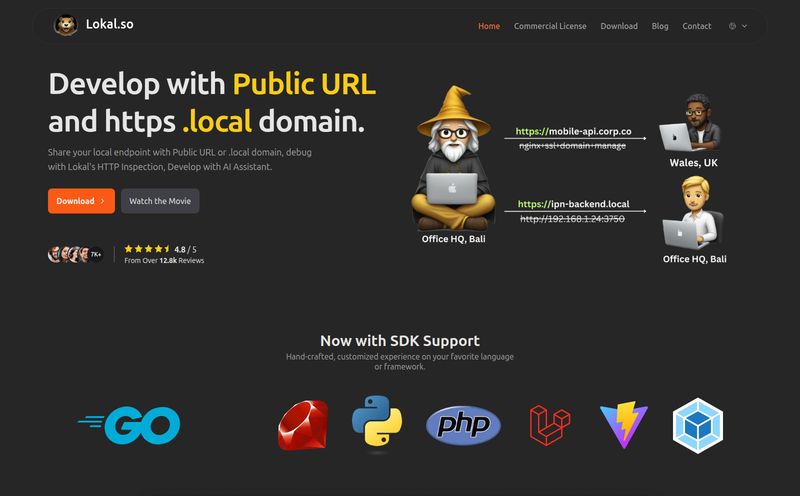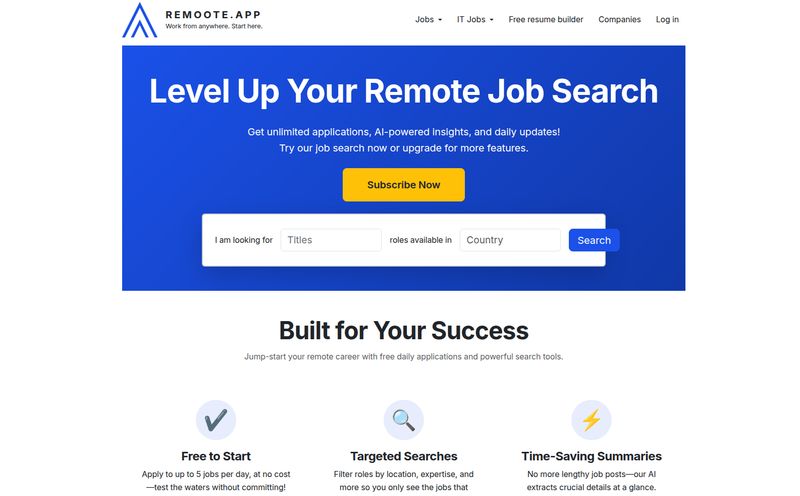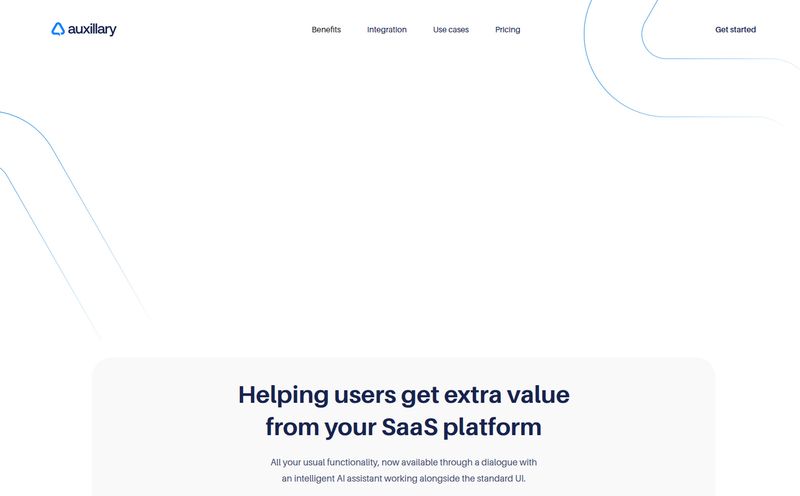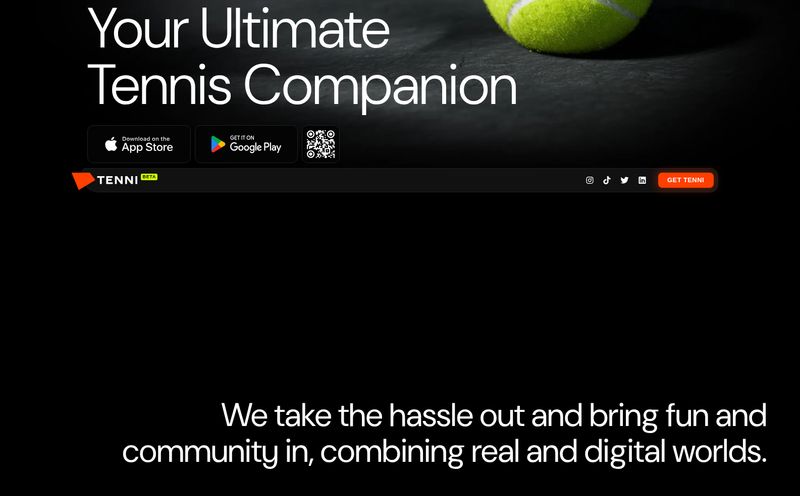I’ve been in the SEO and digital marketing trenches for a long time. Long enough to remember when 'user experience' was a fuzzy concept some folks in the design department talked about, not the absolute cornerstone of conversion rates and rankings it is today. And at the heart of UX? Usability testing.
Let’s be real. Traditional usability testing can be a beast. It's slow. It's expensive. It’s a logistical migraine of scheduling users, finding the right demographic, offering incentives (that aren't just Amazon gift cards), and then... the real work begins. You're left with hours of video, pages of notes, and the soul-crushing task of trying to translate a user's frustrated sigh into an actionable development ticket.
So when a new tool pops up on my radar waving a big flag that says, “We use AI to make this whole process 10x faster and 15x cheaper,” my ears perk up. Part of me is skeptical, the other part is genuinely excited. The tool in question is Thumb Zone, and it’s making some pretty bold claims. Is it just another piece of vaporware, or is it the start of something big for UX and product teams?
So, What Exactly is Thumb Zone? (And Why Should You Care?)
At its core, Thumb Zone is an AI-powered platform designed specifically for mobile usability testing. The goal is simple: help teams build better apps by making the feedback loop faster, cheaper, and smarter. We've all seen good apps die on the vine because of a clunky interface or a confusing user flow. Thumb Zone wants to fix that before it happens.
Their homepage hits you with a powerful line: “Treasure is hidden in qualitative data.” Anyone who's ever had to manually code user interviews knows this is true. The gold is there, but it's buried under a mountain of... stuff. Thumb Zone’s proposition is to be your AI-powered treasure map and shovel, all in one.
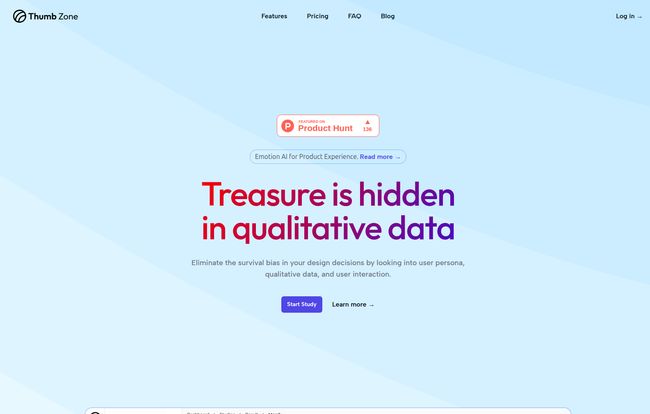
Visit Thumb Zone
The big promises of 10x faster iteration and 15x cheaper testing are, frankly, eye-popping. For a startup or a small business, that’s not just an improvement; it’s the difference between being able to conduct user testing or just guessing and hoping for the best. It opens the door for continuous testing, not just a one-off event before a major launch.
A Closer Look at The AI-Powered Features
Okay, so the promises are big. But what's actually under the hood? It’s not just one thing, but a whole suite of AI tools working together. This is where it gets interesting.
Your New Robot Intern: The AI Assistant and Summarize AI
Creating test plans, scenarios, and documentation is tedious work. It's necessary, but it’s not exactly the creative, problem-solving work most designers and researchers love. Thumb Zone's AI Assistant aims to take over that grunt work. It helps you generate test plans and scenarios, basically setting the stage for your testing without the hours of prep.
Then, on the back end, the Summarize AI steps in. After your tests are done, it sifts through all the interactions and feedback to identify the key user problems. Think of it as an assistant who watches every session and gives you the executive summary, pointing out exactly where users struggled most. This alone could save a team dozens of hours.
The Crystal Ball: UX Predictions and Bird's-eye Insights
This is where it feels a bit like science fiction. The UX Predictions feature uses AI to give you insights on user satisfaction before you even run a full test. It’s like having a seasoned UX pro look over your designs and immediately spot potential friction points. The “Bird’s-eye Insights” feature gives you a high-level view of all user interactions, helping you spot patterns that you might miss when you're looking at individual sessions. It’s about moving from anecdotal evidence to data-driven decisions.
Going Deeper Than Clicks with Tap Mapping and Contextual AI
We've had heatmaps for websites for ages, but Tap Mapping is the mobile-first equivalent, showing you exactly where users are tapping—and where they aren't. But the really clever bit is the Contextual AI. It allows you to integrate personas directly into the testing process. This is a big deal. Finding five real people who perfectly match your “Marketing Manager Molly” persona is nearly impossible. This feature seems to simulate how different user segments would interact with your app, which could be incredibly powerful for personalizing user experiences.
The Most Intriguing Part: User Emotion Analysis
This, for me, is the showstopper. How many times has a user said “Oh, yeah, that makes sense” with a tone that clearly means “I have no earthly idea what to do next”? Qualitative feedback is often filtered through social politeness. User Emotion Analysis aims to cut through that. By analyzing facial expressions and other cues, it tries to understand how the user is actually feeling—frustrated, confused, delighted. As Nielsen Norman Group often points out, empathy is key in design, and this feature is like an empathy engine. It’s trying to translate the unspoken language of user experience.
The Good, The Bad, and The AI
No tool is perfect, especially one that's pushing the boundaries with new tech. So let's have a frank chat about the pros and cons as I see them.
The Good Stuff (Why I'm Genuinely Excited)
The speed and cost reduction is obviously the main headline. It democratizes usability testing, taking it out of the exclusive domain of companies with huge budgets. This means more products will launch with user feedback baked in, which is a win for everyone.
But beyond that, it’s the AI's ability to process qualitative data at scale that really gets me. It solves the “drowning in data” problem. It turns user testing from an art project into a repeatable, scalable science. Faster iteration cycles mean a better product, a higher conversion rate, and ultimately, better traffic and SEO performance because users stick around.
Points of Caution (What Gives Me Pause)
Now for the other side of the coin. My inner skeptic has a few questions. The site’s own materials hint at some potential downsides. Relying too heavily on AI to create test plans could stifle the out-of-the-box creativity of a human researcher who might design a more unconventional, insightful test.
Then there’s the ever-present elephant in the AI room: bias. If the AI is trained on biased data, it will produce biased insights. This is a huge risk. Does it over-index on certain demographic behaviors? It's a question any team using this tool needs to ask.
Finally, and this is a big one for me, the info on data privacy and security is a bit thin. When you're dealing with videos of users and proprietary app designs, you need to know exactly where that data is going and how it's being protected. This is non-negotiable for most companies.
Let's Talk About Pricing... Oh, Wait.
Naturally, I clicked on the pricing page to see what this would all cost. And I was greeted with... a 404 Not Found page. Whoops. While not ideal, it’s not uncommon for new platforms to be in a sort of early-access or demo-first stage. My guess is they're probably using a custom pricing model based on team size or the number of tests you want to run. For now, if you're interested, you’ll have to reach out to them directly through their site. A little bit of a bummer, but not a deal-breaker.
Who Is Thumb Zone Actually For?
So who should be booking a demo right now? I see a few key groups:
- Startups and Lean Teams: This is the most obvious one. If you have a great app idea but a shoestring budget, this could be your golden ticket to professional-grade UX insights.
- Overwhelmed Product Managers: For PMs and UX researchers juggling a dozen priorities, the automation of test creation and analysis is a lifesaver. It frees you up to focus on strategy instead of logistics.
- Digital Agencies: Agencies that want to add more value for their clients could use Thumb Zone to offer quick, affordable UX audits and testing as part of their service packages.
It might be a tougher sell for massive enterprises that already have deeply entrenched, multi-million dollar research departments. But even for them, it could be a fantastic tool for rapid prototyping and preliminary testing before firing up the big, expensive machine.
Frequently Asked Questions about Thumb Zone
What makes Thumb Zone different from tools like UserTesting or Maze?
While they all operate in the user testing space, Thumb Zone's primary differentiator seems to be its deep integration of AI across the entire workflow—from test plan creation and persona simulation to emotion analysis and automatic summarization. It's betting heavily on AI to do the heavy lifting.
Can AI really replace a human user researcher?
I don't think so, and I don't think that's the goal. A better way to think about it is augmentation, not replacement. The AI handles the repetitive, time-consuming tasks, freeing up the human researcher to focus on higher-level strategy, interpreting nuanced results, and making the final creative and empathetic judgment calls.
How accurate is the User Emotion Analysis?
This is a great question. Emotion AI technology has come a long way but isn't flawless. It's best used as another data point, not as absolute truth. When combined with what the user says and does, it can provide a richer, more complete picture of their experience. I'd treat it as a powerful hint, not a diagnosis.
Is my company's data safe with Thumb Zone?
This is a crucial question to ask them directly during a demo. Any reputable SaaS company handling sensitive data should have clear policies on data encryption, storage, and access. Given the lack of public information, you should definitely press them on their security protocols before signing up.
Is there a free trial for Thumb Zone?
The website doesn't explicitly mention a free trial. The main call to action is to "Start Study" or "Learn More," which usually leads to a demo or a sales conversation. This is the best way to find out if you can get a trial period.
The Final Word
So, is Thumb Zone the future of usability testing? It just might be a very important piece of it. The platform is ambitious, smart, and it's tackling a genuine, expensive pain point for countless companies. The idea of making user testing fast, affordable, and continuous is, for me, the holy grail of product development.
Yes, there are questions—about AI bias, data privacy, and the current state of their pricing page. But these are bumps in the road, not roadblocks. Tools like Thumb Zone represent a shift. They're not taking humans out of the loop; they're making them more powerful. They're giving us a way to finally find that treasure hidden in our data without having to dig for a decade to find it. And for that, I'm more than a little excited to see where they go next.
